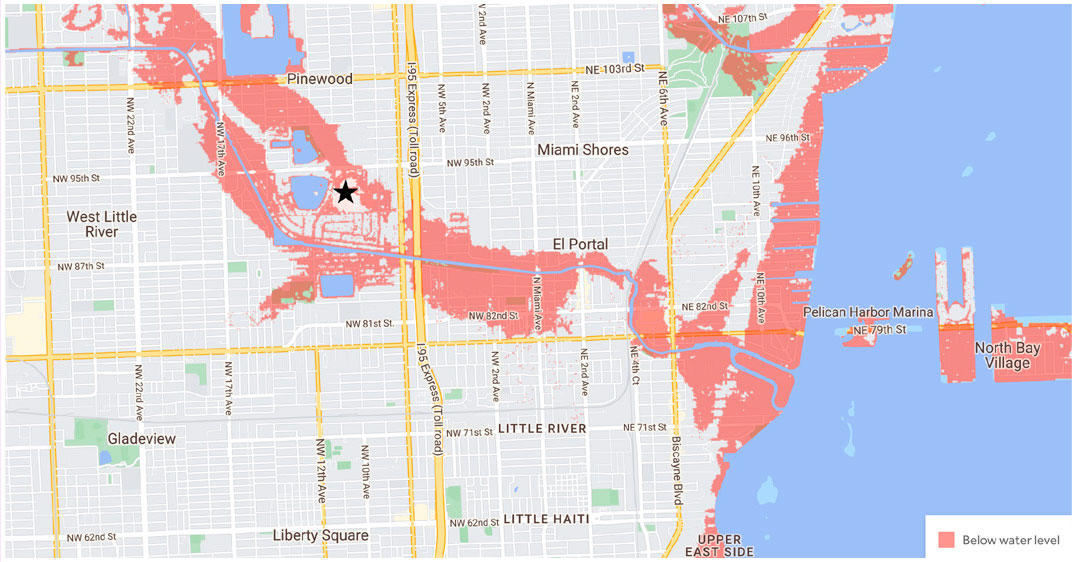2022 CRITICAL INSIGHTS
Sea Level Rise and Health
In 2020, more than 1.7 million people in the United States (U.S.) lived less than 3 feet above current sea level in 2020 (Indicator 2.3.3, Table 1).a50
Sea level has risen eight to nine inches since 1880, as a result of melting snow and ice and thermal expansion of water.a51 The pace of sea level rise is accelerating in the U.S.a52 In many U.S. coastal locations, high-tide flooding — independent of storm surge — is occurring three to nine times more often than it did 50 years ago.a51 Significant further increases are projected for some areas by the mid-2030s.a53
Rising seas affect health through a range of pathways, particularly when combined with storm surge. There are physical, mental health, and financial consequences of flooded homes, schools, businesses, and houses of worship.a54, a55 Sea level rise and flooding contaminate drinking water supplies and soil with waterborne pathogens from failing septic systems,a56 toxic substances from contaminated facilities,a57 and saltwater.a58 Communities of color and low-wealth communities are at greater risk of toxic exposure as a result of floodinga59 and are less insured, making recovery challenging.
Flooding can also make it harder for people to access medical care. Roadways and transportation systems from patients’ homes to medical facilities may be inaccessible, even if the facilities themselves remain functional (Figure 1).a60
Mental health impacts can be long-lasting, as people may be displaced from their homes and communities and experience devastating economic losses.a61 Sea level rise and flooding can also impact cultural heritage sites and undermine opportunities for engaging in traditional practices and livelihoods.a62 Thus, the health impacts of sea level rise may particularly harm Indigenous communities and other communities reliant on coastal resources for their economic, social, or cultural practices.
In addition, recurrent flooding of coastal property diminishes its value, with implications for property taxes that fund local emergency services such as paramedics and ambulances.a63, a64 Although some communities can afford to harden their infrastructure (e.g., sea walls) to forestall impacts, many others cannot, particularly as their property tax base is diminished by rising seas. In addition, these types of infrastructure interventions can push the impacts of sea level to nearby communities. Thus, soft defenses (e.g., mangroves, dune systems) may minimize unintended negative consequences.
FIGURE 1
Many access roads for Miami’s North Shore Medical Center would be affected by a five-foot flood (flooded areas are marked in red on the above Climate Central map), even though the facility itself, which is more than two miles inland, would remain dry. North Shore Medical Center of Miami is indicated by a black star.a60
